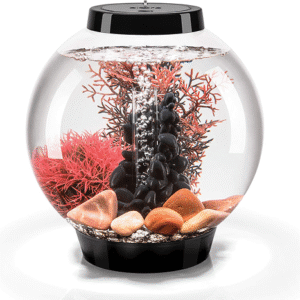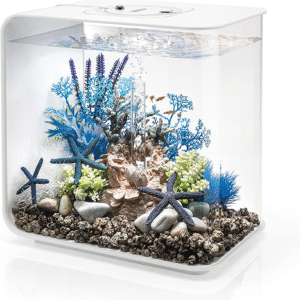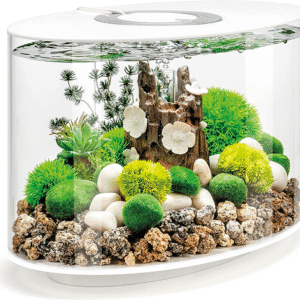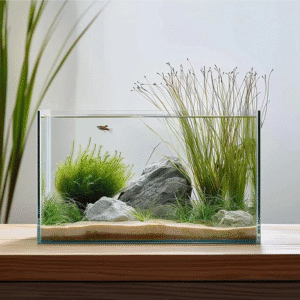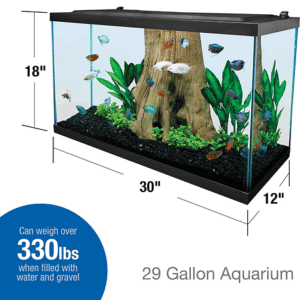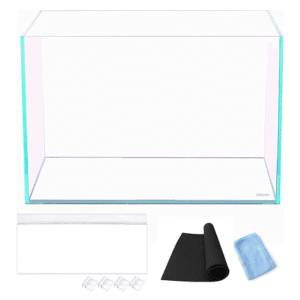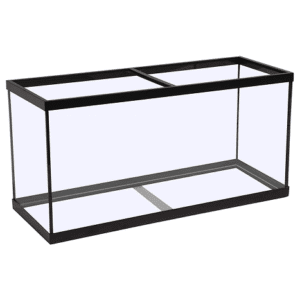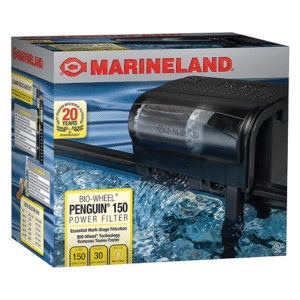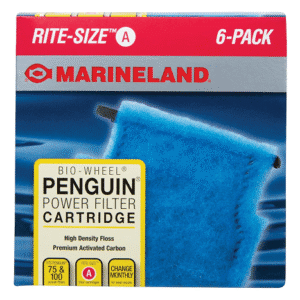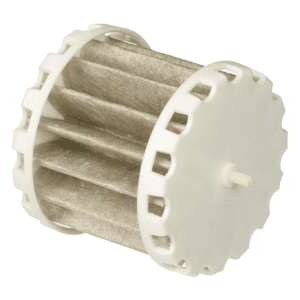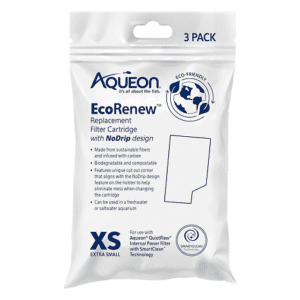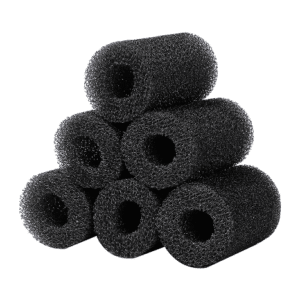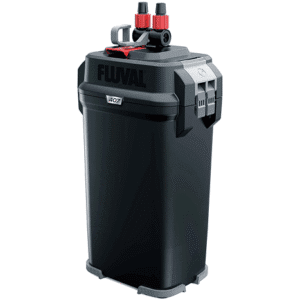#1 The Magical World Beneath the Surface: A Beginner’s Guide to Aquariums
Discover the beauty, science, and joy of starting your own aquarium. This beginner’s guide explores the different types of aquariums, essential equipment, water chemistry, fish and invertebrate choices, and the secrets to creating a thriving aquatic world that can bring peace and wonder into your life.
Imagine a living painting, a small world full of shimmering colors, gentle movements, and a serenity that fills your home with peace. That is what an aquarium truly is: not just glass, water, and fish, but a universe that you create, nurture, and admire every day. For beginners, stepping into the world of aquariums can feel both exciting and overwhelming. There are so many types of tanks, so many fish to choose from, so many terms like pH, ammonia, and filtration. Yet once you understand the basics, it all becomes fascinating—almost magical. In this guide, I will take you through everything you need to know to start your first aquarium, from choosing the type of tank to caring for your fish and understanding the hidden science that keeps them happy and healthy.
Why Keep an Aquarium?
Owning an aquarium is more than a hobby; it is a lifestyle that brings tranquility, joy, and even mindfulness into your daily routine. Watching fish swim gracefully, seeing plants sway with the current, or observing shrimp cleaning the glass can reduce stress and create a sense of calm after a long day. It also awakens curiosity. You begin to notice details of nature that most people overlook—the way fish school together for safety, how invertebrates quietly clean up the ecosystem, how a balance forms between plants, animals, and water chemistry. An aquarium changes the rhythm of your home. It is alive, evolving, and every glance at it reveals something new.
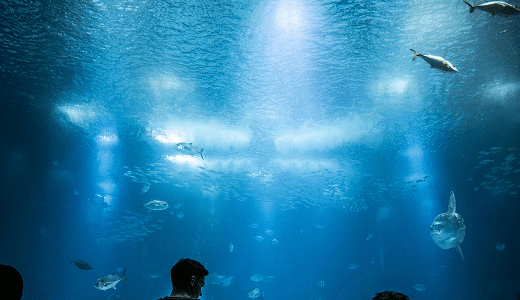
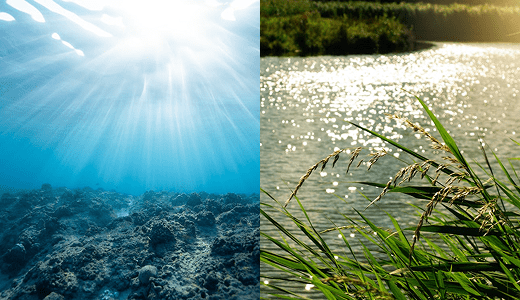
Types of Aquariums for Beginners
When starting out, the first decision is what kind of aquarium you want. Freshwater aquariums are the most common and beginner-friendly. They are generally easier to maintain, less expensive, and offer a wide variety of colorful fish and plants. Within freshwater you can create a peaceful community tank, a species-specific tank such as one for bettas, or even a planted aquarium where lush greenery becomes the centerpiece.
A step above freshwater are brackish aquariums, which hold water with a salinity between fresh and marine. These tanks are suitable for certain unique species, but they require more attention to water chemistry. Marine aquariums, often called saltwater aquariums, open the door to a dazzling array of fish with incredible colors and personalities. However, they demand more equipment, precise care, and higher costs. The most advanced form is the reef aquarium, where corals, invertebrates, and fish live together. These setups are breathtaking but very delicate and are usually best left for later in your aquarium journey.
For most beginners, a freshwater community tank is the ideal starting point. It allows you to learn the fundamentals of fish care, water chemistry, and equipment without becoming overwhelmed.
Essential Equipment You Will Need
Every aquarium requires certain tools to keep the environment healthy. The tank itself must be chosen carefully; larger tanks are often better for beginners because water volume is more stable and forgiving. Along with the tank, you need a sturdy stand, a substrate such as gravel or sand, and decorations or hiding places to help your fish feel secure.
Filtration is absolutely vital. A good filter not only clears debris but also houses beneficial bacteria that break down toxic waste. Without this biological balance, your fish cannot survive. Alongside the filter, a heater and a thermometer ensure that tropical fish enjoy a stable, warm environment, usually between 22 and 28 degrees Celsius (72 to 82 Fahrenheit). Lighting is also essential, not only to showcase the beauty of your aquarium but also to support plant growth if you choose live plants.
Another critical tool is a water test kit. Beginners often underestimate this, but it is your window into the invisible world of water chemistry. With these kits you monitor pH, ammonia, nitrites, and nitrates—parameters that determine whether your fish thrive or suffer.
Understanding Water Chemistry
Water may look simple, but inside an aquarium it becomes a delicate balance of chemistry and biology. At the heart of this balance is the nitrogen cycle. When fish eat, they produce waste, and that waste breaks down into ammonia, a substance highly toxic even in small amounts. Beneficial bacteria convert ammonia into nitrite, which is also dangerous, and then into nitrate, which is less harmful but must still be controlled. This process is called cycling, and it is the reason why you cannot simply fill a tank with water and immediately add fish. You must first allow these bacteria to establish themselves, which can take several weeks.
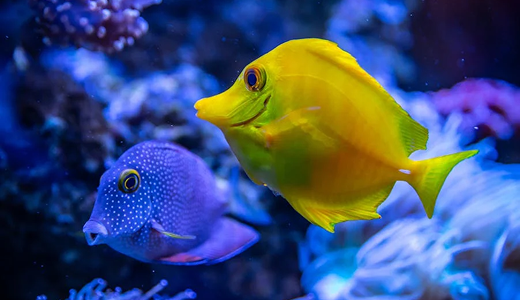
Other parameters matter as well. The pH level tells you how acidic or alkaline your water is, and stability is key—sudden changes are stressful for fish. General hardness and carbonate hardness measure the minerals and buffering capacity of the water, affecting both fish health and plant growth. Temperature, of course, must remain steady, as fluctuations weaken your fish’s immune system.
By learning to test and adjust these values, you become the guardian of an invisible world. You ensure that your aquarium is not just beautiful to look at, but truly healthy.
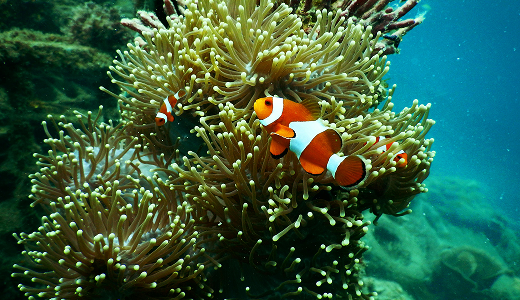
Choosing Your First Fish and Invertebrates
For beginners, it is wise to start with hardy, peaceful species that adapt easily to a range of conditions. Guppies, platies, mollies, and swordtails are colorful, active, and forgiving. Small schooling fish like neon tetras or zebra danios bring life and movement to the middle of the tank. Corydoras catfish are excellent bottom dwellers that help keep the substrate clean. Bettas are also popular, though they require special care and usually do best alone or in carefully chosen setups.
Invertebrates may be small, but they play an important role. Snails such as nerites or mystery snails quietly consume algae and uneaten food, helping keep the tank clean. Shrimp, like the vibrant red cherry shrimp or the larger Amano shrimp, not only add beauty but also act as tiny janitors, feeding on biofilm and debris. These creatures remind us that an aquarium is more than fish; it is an ecosystem where every organism contributes.
Caring for Your Aquarium and Its Inhabitants
Setting up the aquarium is only the beginning. The real beauty unfolds in the daily care and attention you give to your aquatic world. An aquarium is alive, and like any living system, it requires consistency. This does not mean hours of complicated work—quite the opposite. Once your tank is established, caring for it becomes a simple and rewarding ritual, one that connects you with your fish and deepens your sense of responsibility toward them.
The heart of aquarium maintenance is water quality. Fish are happiest and healthiest when the environment remains stable, so regular water changes are crucial. Replacing a portion of the water every week helps remove excess nitrates, refresh minerals, and restore clarity. This process also gives you the opportunity to clean the substrate gently, removing waste that has settled at the bottom. Think of it as refreshing the air in a room—without it, things quickly become stale.
Feeding is another area where beginners often make mistakes. It can be tempting to sprinkle in extra flakes or pellets whenever the fish swim to the surface, but overfeeding is one of the main causes of water problems. Fish need only as much food as they can consume in a couple of minutes. The rest quickly decays, releasing ammonia and burdening the filter. Feeding your fish the right amount, once or twice a day, not only keeps the tank clean but also helps them remain active, colorful, and healthy.
Observation is perhaps the most underrated part of fishkeeping. By simply watching your fish each day, you learn to notice patterns in their swimming, feeding, and interactions. You will see how schooling fish move together like a choreographed dance, how bottom-dwellers sift through the sand, or how shrimp quietly graze on rocks. These moments of observation are not just relaxing for you; they are also the best way to detect early signs of stress or disease. If a fish hides more than usual, loses its appetite, or shows clamped fins, it might be a sign that something in the water has changed. Catching these signals early allows you to take corrective action before problems escalate.
Invertebrates and plants add another layer of life to your aquarium and deserve special care. Shrimp and snails are often more sensitive to water chemistry than fish, so stable parameters are especially important for them. Live plants, meanwhile, not only beautify the tank but also help filter the water naturally by absorbing nitrates. They provide hiding spots, oxygenate the water, and create a more natural, balanced ecosystem. The simple act of pruning plants, replanting cuttings, or watching new leaves unfurl adds a gardening-like joy to aquarium keeping.
As weeks turn into months, you will notice something remarkable: your aquarium begins to stabilize. The beneficial bacteria, plants, and creatures form a rhythm, and maintenance becomes second nature. What once felt complex now feels intuitive. This is when the deeper reward appears—the realization that you are not just keeping fish; you are keeping balance, harmony, and life itself.
The Life-Changing Joy of Aquariums
People often start an aquarium for decoration, but they stay for something much deeper. The presence of an aquarium in your home changes the atmosphere. It becomes a source of calm, a point of focus that draws you in and quiets your mind. Studies have even shown that watching fish reduces stress, lowers blood pressure, and brings a meditative calm. It is no wonder that aquariums are often found in hospitals, offices, and waiting rooms—they comfort us in ways words cannot.
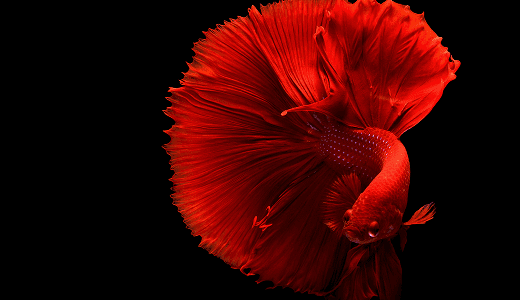
Beyond the personal benefits, an aquarium teaches patience and responsibility. You cannot rush the nitrogen cycle. You cannot instantly fix a pH imbalance. You learn to wait, to test, to adjust gradually. In a world that often demands speed, your aquarium becomes a teacher of slowness and care. It also instills respect for nature. Even in this small glass box, you witness how life depends on balance, how every action has a consequence, and how fragile yet resilient living creatures can be.
And then, there is beauty. Few sights compare to a healthy aquarium glowing in the evening light, its fish gliding like living jewels, plants swaying gently, snails tracing their quiet paths. It is art that breathes, science that moves, and nature that fits into the heart of your home.
Conclusion
Starting an aquarium as a beginner may feel like stepping into a new world—and that is exactly what it is. By learning the basics of tank setup, filtration, water chemistry, and species care, you open the door to a lifelong passion. The challenges are small compared to the rewards: the calm you feel as you watch, the joy of seeing fish thrive under your care, and the pride of creating a balanced ecosystem with your own hands.
An aquarium is not just decoration; it is a living connection to the wonders of nature. Once you begin, you will understand why so many people describe it not as a hobby, but as a way of life.
Related Products You May Like
-

biOrb Classic Round Aquarium
$135.80 -

biOrb 4-Gallon Round Flow Aquarium
$195.00 -

biOrb LIFE 15 (4-Gallon)
$195.00 -

Aqueon LED MiniBow 5 Gallon Aquarium Kit with SmartClean™ Technology
$80.00 -

Marineland Portrait 5 Gallon Glass Aquarium
$75.00 -

Vimvins 5 Gallon Glass Aquarium – Desktop Fish Tank
$60.00 -

Tetra 29 Gallon Glass Aquarium – Rectangular Tank
$136.79 -

Allcolor Rimless 21 Gallon Glass Aquarium
$209.00 -

Tetra 55 Gallon Glass Aquarium – Rectangular Tank
$336.86 -

Marineland Penguin Bio-Wheel Power Filter (HOB) – for 10 to 50 Gallon Tanks
-

Marineland Penguin Power Filter Cartridges – Rite-Size A, B, C (Replacement Cartridges)
-

Marineland Bio-Wheel Assembly – Replacement Part for Penguin Filters
$9.79 -

Aqueon QuietFlow Internal Filter with SmartClean™ Technology – Multiple Sizes (Extra Small, Small, Small Shrimp, Medium)
-

Aqueon EcoRenew Filter Cartridges – Extra Small (3 Pack)
-

AQUANEAT Pre-Filter Sponge – 6 Pack (0.8” Intake Cover for Shrimp, Fry, Snails)
$10.00 -

Fluval 407 Performance Canister Filter – for Aquariums up to 100 Gallons

